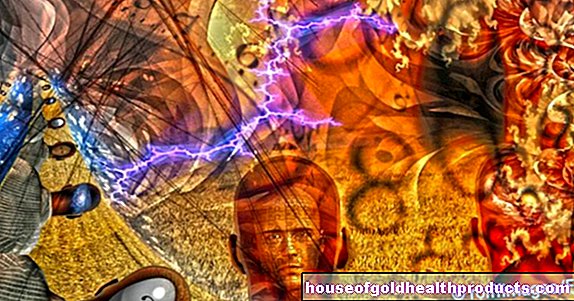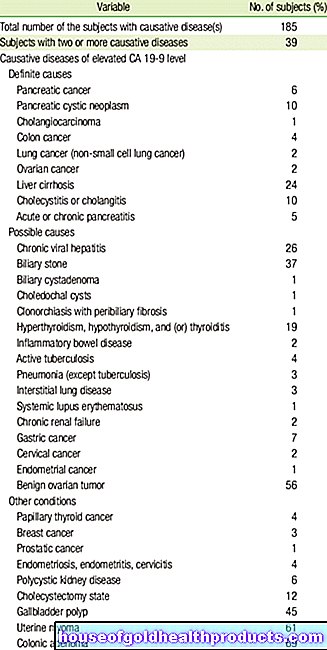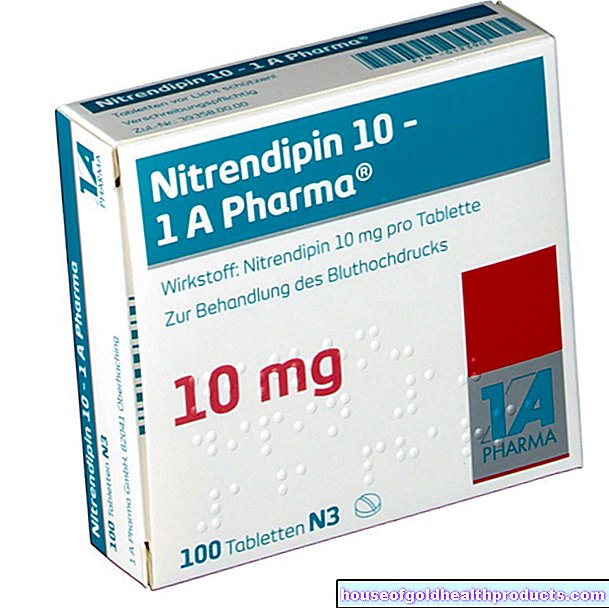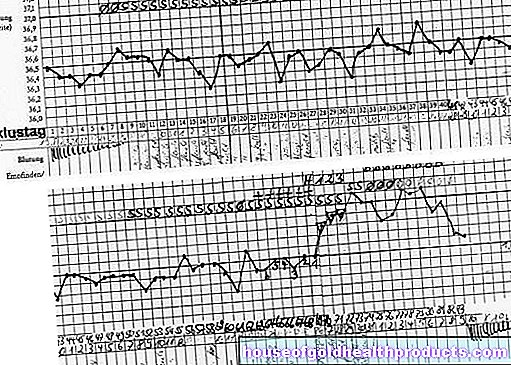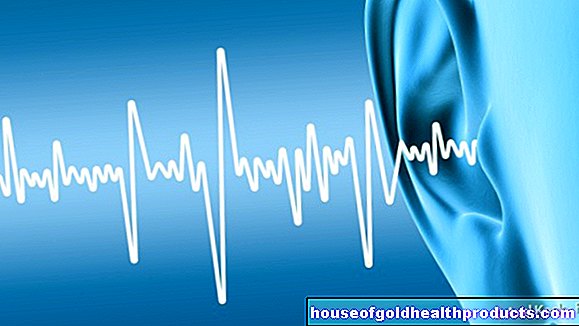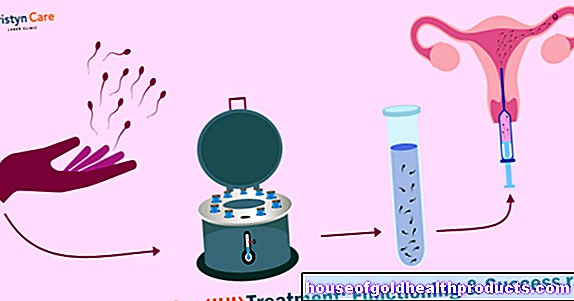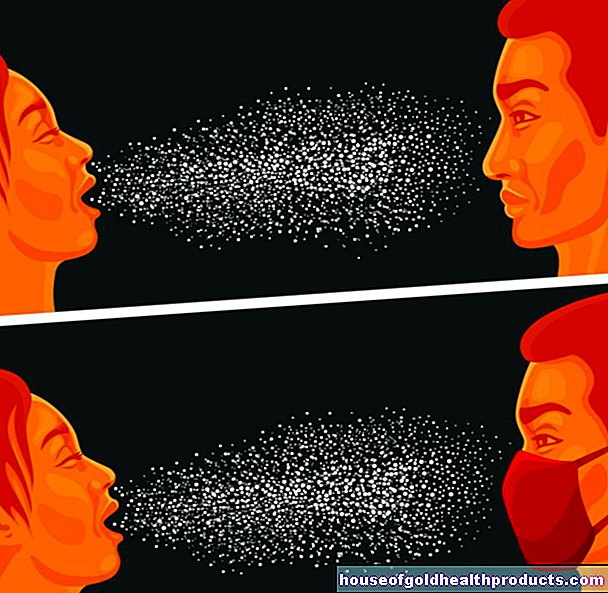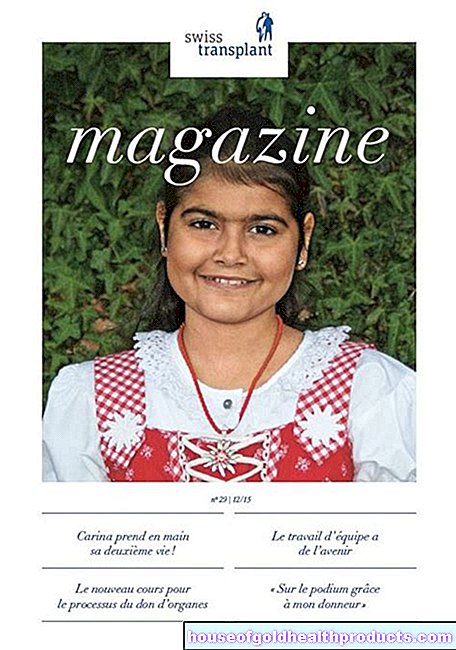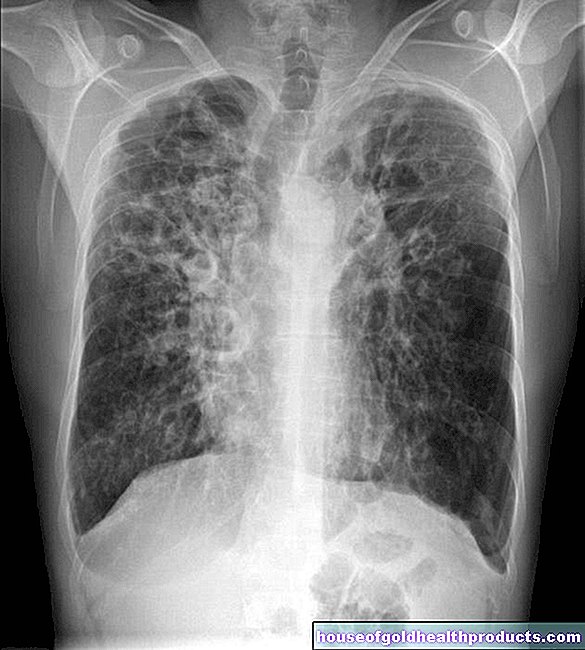Trimipramine
Updated on All content is checked by medical journalists.The active ingredient trimipramine belongs to the oldest group of antidepressants, the so-called tricyclic antidepressants. It has a mood-enhancing, anxiety-relieving, sleep-promoting and calming effect. For this reason, it is primarily used to treat depression, which is characterized by restlessness, anxiety and sleep disorders. Read more about the effects, side effects and use of trimipramine here.
This is how trimipramine works
Trimipramine belongs to the group of tricyclic antidepressants (TCAs). It has a mood-enhancing (antidepressant), calming (sedating) and anxiolytic (anxiolytic) effect. Trimipramine also has a strong inhibitory effect on the release of stress hormones.
The cause of mental illnesses such as depression is, among other things, impaired signal transmission between the nerve cells (neurons) in the brain and the associated impaired function of the brain. The signal is transmitted via various chemical messenger substances, so-called neurotransmitters.
A nerve cell releases a neurotransmitter, which then binds to certain docking points (receptors) of the neighboring cells and thereby transmits a corresponding signal (exciting or inhibiting). The messenger substance is then taken up again in the original cell, which ends its signaling effect.
This signal transmission, which is disturbed in depression, is an important target for antidepressants. They prolong or inhibit the effect of certain messenger substances and thus achieve the desired mood-lifting, anxiety-relieving and calming effect.
Trimipramine is one of the tricyclic antidepressants, but its effect differs from the other members of this class of drugs. These primarily inhibit the re-absorption of the messenger substances norepinephrine and serotonin in the original cell, which has a drive-increasing and antidepressant effect. With trimipramine, on the other hand, the calming and anxiety-relieving effect is more pronounced: It comes about because the active ingredient blocks the receptors of serotonin and two other messenger substances - acetylcholine and histamine.
Trimipramine also inhibits the release of stress hormones (such as adrenaline) and blocks the so-called dopamine D2 receptors. This probably explains the good effectiveness of the antidepressant in delusional depression, schizophrenic psychoses, mania (abnormally increased mood) and sleep disorders.
Intake and elimination
Only 40 percent of the trimipramine ingested actually gets into the bloodstream, so the active ingredient has a low bioavailability. 24 hours after ingestion, trimipramine is half broken down and excreted by the body (long half-life).
When is trimipramine used?
Trimipramine is used for its antidepressant, calming, sleep-inducing, and anxiolytic effects in:
- Depressive illnesses with the main symptoms of restlessness, anxiety and sleep disorders
Outside of official approval ("off-label"), trimipramine is sometimes used as part of long-term pain therapy. While it is not pain reliever itself, it can enhance the effectiveness of pain relievers by helping the patient to distance himself from the pain.
Another way of using trimipramine is in treating opioid-dependent people. The active ingredient relieves withdrawal symptoms such as fear or restlessness. Here, too, the application is "off-label".
This is how trimipramine is used
The active ingredient is used in the form of tablets, drops or solution. The dose is determined by the attending physician. A dosage of 25 to 50 milligrams per day is usually started.
If necessary, the dose can be increased slowly as directed by the doctor. For moderate symptoms to a total daily dose of 100 to 150 milligrams and for severe depressive episodes to 300 to 400 milligrams. The maximum daily dose is 400 milligrams. Because the active ingredient has a strong calming effect, the main dose should be taken in the evening.
The treatment of chronic pain conditions begins with a dose of 50 milligrams per day and can be increased to a maximum daily dose of 150 milligrams. If there are sleep disorders without depressive symptoms, 25 to 50 milligrams are usually taken in the evening.
A dose adjustment is necessary in elderly patients and in patients with impaired liver or kidney disease.
When treatment with trimipramine is stopped, it is advisable to slowly discontinue the drug (i.e. gradually reduce the dose). If the antidepressant is stopped abruptly, there is a risk of mood swings, restlessness, flu-like symptoms and an increased risk of suicide.
What are the side effects of trimipramine?
The most common side effects are tiredness, drowsiness, dizziness, constipation, increased appetite and weight, dry mouth, sweating and difficulty adjusting the eyes to near and distance vision (accommodation disorders).
Common side effects of trimipramine are general symptoms such as restlessness, insomnia, nausea, and stomach pain, but these can also be due to the depression itself.
Other possible side effects are sexual dysfunction, skin rashes and bladder emptying disorders (micturition disorders). Trimipramine can rarely lead to confusion, changes in the blood count, liver dysfunction, ringing in the ears (tinnitus), bowel obstruction (ileus), hair loss and urinary retention (inability to urinate).
What should be considered when taking trimipramine?
Contraindications
Trimipramine must not be used in:
- untreated narrow-angle glaucoma (a form of glaucoma = glaucoma)
- severe heart disease
- Urinary evacuation disorders
- Intestinal paralysis (paralytic ileus)
- Simultaneous use of monoamine oxidase inhibitors (MAOIs) - are used, among other things, for depression and Parkinson's
Interactions
Taking trimipramine with other drugs can cause drug interactions. For this reason, the antidepressant should not be taken with the following substances:
- Centrally depressant substances such as opioids (strong pain relievers), hypnotics (sleeping pills) and alcohol
- Anticholinergics such as atropine (in emergency medicine and ophthalmology) and anti-Parkinson drugs
- certain anti-arrhythmic medicines, such as cinidin and amiodarone
- Drugs that cause the QT time in the heart to be prolonged
Age restriction
Trimipramine should not be used to treat depression in children and adolescents under 18 years of age.
pregnancy and breast feeding period
Trimipramine therapy that has already started can be continued during pregnancy. If a pregnant woman needs an antidepressant for the first time, other agents with which there is more experience are to be preferred (such as citalopram or sertraline) - even if there is no suspicion that trimipramine has a harmful effect on the development of the unborn child.
In newborns, various adjustment disorders (hyperexcitability, poor drinking, breathing disorders, etc.) are possible if the woman took tricyclic antidepressants such as trimipramine in the last trimester of pregnancy.
There is no published experience of breastfeeding with trimipramine. It is therefore only prescribed during breastfeeding if better-studied antidepressants are out of the question.
How to get trimipramine medication
In Germany and Switzerland, trimipramine can only be purchased from a pharmacy with a doctor's prescription. The prescription requirement also applies to low-dose preparations.
No preparations containing the active ingredient trimipramine are available in Austria.
Since when has trimipramine been known?
Tricyclic antidepressants were developed in the 1950s and are among the oldest substances in this group. Imipramine was the first drug in this class of drugs to have an antidepressant effect.
Many other tricyclic antidepressants with a similar chemical structure were subsequently developed and launched, including trimipramine in 1961.
Tags: nourishment unfulfilled wish to have children hospital
